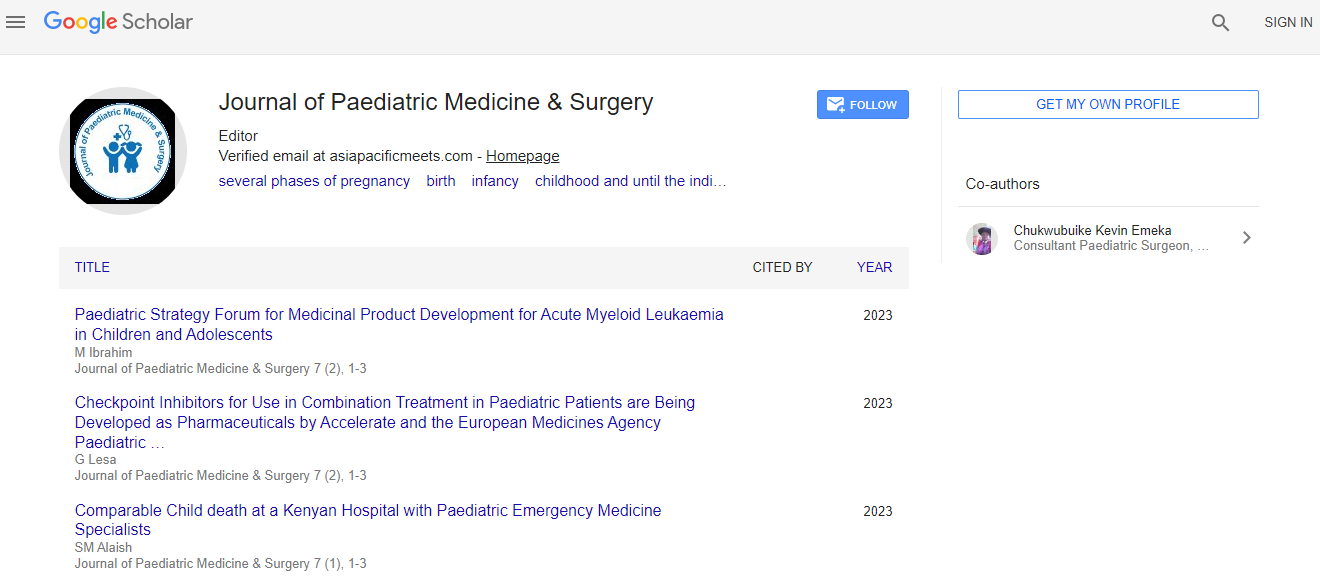Pediatrics Healthcare & Pediatric Ophthalmology 2019: Improving outcome of preterm births as regards morbidity and mortality in secondary level care setup with protocol based minimal interventions - Vijay Kumar Dahiya - Mukand Lal District Civil Hospital, India
*Corresponding Author:
Copyright: © 2020 . This is an open-access article distributed under the terms of the Creative Commons Attribution License, which permits unrestricted use, distribution, and reproduction in any medium, provided the original author and source are credited.
Abstract
Preterm birth, defined as birth before 37 weeks of gestation, is the single most important determinant of adverse infant outcomes, in terms of survival and quality of life. Globally, it is the leading cause of perinatal and neonatal mortality and morbidity. Preterm infants are particularly vulnerable to complications due to impaired respiration, difficulty in feeding, poor body temperature regulation and high risk of infection. Preterm babies are prone to serious illness or death during the neonatal period. Without appropriate treatment, those who survive are at increased risk of lifelong disability and poor quality of life. Complications of prematurity are the single largest cause of neonatal death and the second leading cause of deaths among children under the age of 5 years. Global efforts to further reduce child mortality demand urgent action to address preterm birth. With the increasing contribution of neonatal deaths to overall child mortality, it is critical to address the determinants of poor outcomes related to preterm birth to achieve further reductions in child mortality. Infant mortality and morbidity from preterm birth can be reduced through interventions delivered to the mother before or during pregnancy, and to the preterm infant after birth. Interventions can be directed at all women for primary prevention and reduction of the risk of preterm birth (e.g. smoking cessation programme) or aimed at minimizing the risk in women with known risk factors (e.g. progestational agents, cervical cerclage). However, the most beneficial set of maternal interventions are those that are aimed at improving outcomes for preterm infants when preterm birth is inevitable (e.g. antenatal corticosteroids, magnesium sulfate and antibiotic prophylaxis). Special care of the preterm newborn to prevent and treat complications of prematurity is also critical to newborn survival. In high-income countries, reductions in mortality rates in infants that were born preterm have been driven largely by improved care and, more importantly, by appropriate policy changes.
We made a research with the Preterm Infant mortality and morbidity at Mukand Lal District Civil Hospital from 2011. Till date 4867 number of newborn has been admitted in this secondary care level newborn unit. Out of these 3412 were treated and discharged from hospital, 1247 were referred to tertiary care centers and 208 newborn expired during treatment. It was observed that one important cause of neonatal mortality and referral to tertiary care centre was premature or preterm birth of newborn. As out of 208 deaths 129 were preterm babies. Preterm birth, defined as birth before 37 weeks of gestation is an important cause of neonatal deaths and ultimately a major contributor to overall infant and child mortality. So, it is important to address the determinants of poor outcomes related to preterm birth to achieve further reductions in infant and child mortality. Infant mortality and morbidity due to premature birth can be reduced through interventions delivered to the mother before or during pregnancy and during labor, and to the preterm infant after birth. Interventions can be directed to all women for primary prevention and reduction of the risk of preterm birth (e.g. smoking cessation programme) or aimed at minimizing the risk in women with known risk factors (e.g. progestational agents, cervical cerclage). However, the most beneficial set of maternal interventions are those that are aimed at improving outcomes for preterm infants when preterm birth is inevitable (e.g. antenatal corticosteroids, magnesium sulfate and antibiotic prophylaxis). It also need certain guidelines to provide evidence-based recommendations for interventions during pregnancy, labour and during the newborn period that are aimed at improving outcomes for preterm infants. These guidelines are mandatory for health-care professionals responsible for developing national and local health-care protocols and policies, as well as managers of maternal and child health programmes and public health policy-makers in all settings. This guideline focuses on improving maternal and neonatal outcomes associated with preterm birth, and specifically includes both the care of pregnant women at imminent risk of preterm birth (birth < 37 weeks of gestation) and the care of preterm babies immediately after birth in all settings. Women at imminent risk of preterm birth are the pregnant women who are likely to deliver a preterm baby either as a result of onset of spontaneous preterm labour, preterm premature rupture of membranes or elective (or indicated) preterm birth.

